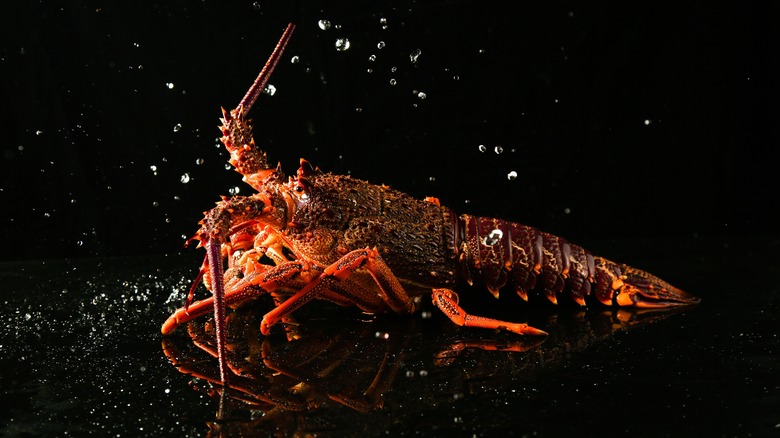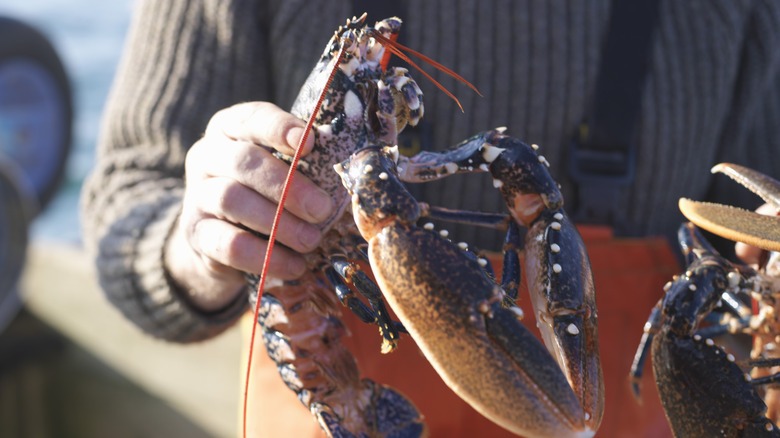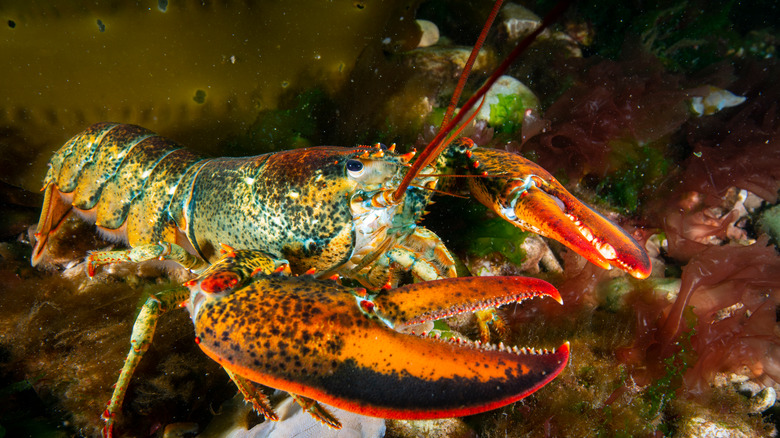Why Lobsters Can't Taste Food Without Their Feet
Collectively, humankind has devoted a tremendous amount of time to studying the flora and fauna of planet Earth. Such research pays dividends every day. According to Atlas Obscura, up to around 18,000 new species are discovered around the world every year. The outlet notes that earlier categorization errors and such are included in this extraordinary number, but that's just a hint of the incredible surprises that still live on Earth, waiting to be discovered.
Though our knowledge of other spectacular creatures is ever-increasing, a fact remains that is slightly sobering — we can't help but look at such species through a human lens. The good thing about this is that, as we've kind of accepted the human way of being and of doing things as the default, anything that's radically different is all the more interesting (and often bizarre) as a result.
Lobsters are just one curious case study. These water-dwellers, it seems, taste their food with their feet. Lobster feeding time sounds like quite the spectacle.
The lobster's intriguing gastric mill
Now, there's a wide array of odd eating habits and curious digestive systems in the animal kingdom. Cows, famously, have four stomachs, but there's actually a little more to the situation than that. As the University of Minnesota explains, ruminants technically have four separate sections of one stomach, each with a different role to play in the complicated cow consumption process.
Lobsters, according to the University of Maine's Lobster Institute, are well-equipped to eat the tough seafood (crabs and mussels among them) that makes up much of their preferred diet. Using their claws, they can rip their prey into tasty little pieces and break through tough shells. From there, morsels are delivered into the maxillipeds (which can be loosely deemed the lobster's "mouth") by its limbs. In short, they employ the same "crush, smoosh, and shovel in" maneuver favored by human babies in high chairs.
Lobsters and human infants do differ in eating habits and mechanisms in some subtle ways, though. For instance, the "teeth" of a lobster are called a gastric mill, the outlet goes on, where it breaks food down for digestion. This is not in what passes for its mouth but in the stomach. For another, hairs on the creature's body allow it to both smell and taste. Yes, they taste with their feet.
Hairs are the key
It's a unique system, for sure. Much like a wide range of other creatures and species, though, lobsters are biologically equipped for their habitat (hence the claws for their often-tough food) and their own capabilities.
As Popular Science explains, these unique animals are very sensitive. With very limited vision, they're reliant on this series of hairs to find, feel, smell, and, yes, taste their way around. It may not be for everyone, but it clearly works for lobsters. According to the National Lobster Hatchery, the first fossil of a lobster as we know them today (relatively speaking) dates back more than 140 million years.
The Lobster Conservancy states that different species have different approaches to getting at their varied food choices. Slipper lobsters have blade-like legs that allow them to cut into those tough shells (lacking powerful jaws and claws). In all cases, it seems, the hairs (or proprioceptors) in their feet and legs can do even more than just taste — they enable the creatures to orient themselves and find their way around in more ways than one.


